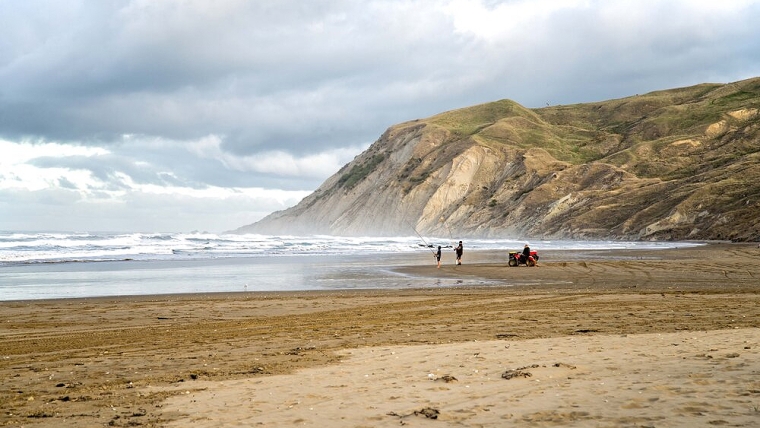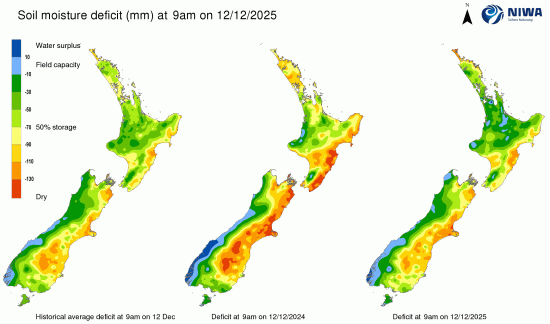
Here's our summary of key economic events overnight that affect New Zealand with news the world's factories are really humming again.
The March non-farm payrolls report in the US has been a good, positive one, led by an accelerating pace of vaccinations and the anticipation of more stimulus. Employers added +916,000 jobs in March, up from +416,000 in February and the most since August 2020. The leisure and hospitality sector led the way, adding +280,000 jobs as Americans returned to restaurants and resorts in greater numbers. However, these gain left the pandemic deficit at an -8.4 mln jobs lost since February 2020, so they have a long way to go. Analysts say that future gains will grow from here, with the April data likely to be even better because the March data was collected before most states opened up, and before the latest stimulus payments actually arrived.
One feature we should watch; as more lower-paid jobs open up in their workforce, the strong growth in average weekly earnings is moderating, but it is still higher by +4.2% pa, just not as high as the prior +5.2% pa.
The number of initial claims for unemployment benefits actually rose marginally last week, although to be fair, the prior week's numbers were revised lower. That means the total number of these benefits is now 4.1 mln, and a level lower than a week ago.
The labour market improvements are also reflected in the state of American factories. They are running at the best levels in 14 years and since before the GFC. The March results were affected by well-publicised supply-change problems, but new order levels are high, and hiring is rising. The previously noted sharp rises in costs and prices is also a feature of these reports. The locally-watched ISM PMI reported strong conditions in the face of pandemic difficulties. The internationally benchmarked Markit PMI was equally positive.
American vehicle sales rose sharply in March to a rate of 17.7 mln per year, up from 15.5 mln per year in February. Still, this leaves the American car markets still well into second place behind China.
Canadian building permits rose unexpectedly strongly, in this case in February from January, with notable rises in non-residential construction permits. Building permit levels for residential construction were lower in February than January, but year-on-year they are up a very notable +25%.
Not so flash is the private sector Caixin PMI for China. Like its official version, this one reports a cooling in their expansion of activity in private factories and the heat has well and truly gone out of their sharp recovery. It was the slowest 'expansion' in almost a year. But price rises, some quite sharp, are becoming more common. For example, corn prices have risen almost +50% in a year, and there are moves to substitute it wheat and rice in animal feed. That may have future food security issues for China. (Following what is going on in China is getting ever more difficult as China kicks out more and more independent news organisations. Few remain.)
In North Korea, there are real signs of economic collapse. Diplomats from its only 'friends' are fleeing by any means possible.
However, South Korean factories remain in a solid expansion mode. Factories in Taiwan are expanding even faster.
In Europe, their factory sector is rising as well. Record increases in output, new orders, exports and purchasing activity were recorded, while unprecedented supply-side delays drove their sharpest rise in input costs for a decade.
In Australia, their factories are expanding faster too. And we should note that the Brisbane snap lockdown has ended and is not extending into Easter.
While a top producer says it expected the iron ore price to fall -50% in 2021, in fact it is holding high, and there are reports of more supply disruptions and the immediate risk of for even higher prices. Inflation isn't getting any respite from core commodities. Further, in a few days, we will get the latest update on global food prices, and almost certainly they have risen in March.
The IMF has released a series of global economic reports, the heart of which show rising economic growth rates especially in the first world, but problems for the developing world and rising inequality. The improving American economy is drawing billions of dollars in capital from emerging markets, stirring concerns that investor flight may destabilise these countries where pandemic infections remain high and the prospect of an economic recovery seems distant. Not helping are awful local public policy positions in places like Turkey and Brazil.
The IMF are also warning about the rising nonfinancial sector leverage, which they see as a real risk to be addressed and entirely a consequence of loose monetary policies and vast pandemic stimulus. And it is pointing out the global risks from commercial real estate in the post-pandemic environment.
The Suez Canal said it was close to clearing a backlog of shipping that built up when a giant container ship was grounded in the waterway.
Wall Street is closed today but yesterday the S&P500 ended at a record high, up +1.1% for the week and with a capitalisation gain since the start of March of almost +US$1.8 tln. Overnight, European markets were all closed as well but ended their final Thursday session up an average of +0.7%. Yesterday, Tokyo was trading and ended with a +1.6% rise, which gave a weekly gain of +2.3%. Hong Kong was closed, but it had a weekly gain of +2.1% through Thursday. Shanghai was open an trading on Friday and posted a +0.5% gain on the day and a weekly gain or +1.9%. The ASX200 ended its week on Thursday down and with a flat weekly result. The NZX50 Capital Index ended its shortened week with a +1.1% gain for the week.
The latest global compilation of COVID-19 data is here. The global tally is still rising, now 129,910,000 have been infected at some point, up +1,459,000 in two days. Global deaths reported now exceed 2,832,000 and +25,000 in two days. Vaccinations in the world are still rising fast, now up to 552 mln and in the US almost 45% of their population (152.3 mln) have now had this protection (+6 mln in two days) as they achieve a very fast rollout. The number of active cases there fell to 6,942,000 but the improvements have virtually stopped.
The UST 10yr yield is down -2 bps at 1.71% after. The US 2-10 rate curve has flattened again to 153 bps. Their 1-5 curve is steeper at +90 bps, while their 3m-10 year curve is little-unchanged at +169 bps. The Australian Govt 10 year yield is down -5 bps at 1.76%. The China Govt 10 year yield is unchanged at 3.22%. And the New Zealand Govt 10 year yield is up +1 bp at 1.83%.
The price of gold starts today up +US$16 from Thursday at US$1730/oz.
Oil prices have firmed marginally and are now at just over US$61/bbl in the US, while the international price is now just over US$64.50/bbl.
The Kiwi dollar opens today marginally firmer at just on 70.2 USc. Against the Australian dollar we are also firmer at 92.3AUc. Against the euro we are also virtually unchanged at 59.7 euro cents. That means our TWI-5 opens today a little higher at 72.9.
The bitcoin price will start today at US$59,140 and up only +0.4% from this time Thursday. Volatility in the past 24 hours has been moderate at +/- 1.8%. The bitcoin rate is charted in the exchange rate set below.
The easiest place to stay up with event risk today is by following our Economic Calendar here ».
Daily exchange rates
Select chart tabs
8 Comments
Ship, train and a petro plant. Taiwan sure is having a lot of bad luck lately.
"You can fool some of the people all of the time, and all of the people some of the time but you can not fool all of the people all of the time"
Abraham Lincoln
https://www.nzherald.co.nz/hawkes-bay-today/news/stuart-nash-labour-fro…
Ultra-fluff piece by Napier MP Stuart Nash – including the usual throwaway line attempting to excuse their 3+ years of failure:
“New Zealand's housing crisis has been decades in the making, and there are no quick fixes.”
Well, flinging the immigration door open after going into the 2017 election saying otherwise certainly didn’t help the cause.
Unsurprisingly, not a single mention of immigration in the entire article – perhaps he thinks there is absolutely zero correlation between immigration and subsequent housing demand – be it purchase or rental.
And then the borders reopened…..
Unsurprisingly, not a single mention of immigration in the entire article
That's how these people roll. By ignoring what they don't want you to know. However, at the end of the day, I think that money printing is equally to blame. By money printing, that means the ability of the banks to lend mortgages 'into existence.' That is really the juice of your bubble. It's a similar story across the Anglosphere. Immigration is an easy one as well. But it's also fraudulent if the infrastructure doesn't cater for the new immigrants and existing citizens. The GDP figs look great and everyone claps when the govt announces the headline measure. However, the more important measures like GDP per capita are never talked about because they tell a different story.
So in Auckland we have been on water restrictions all summer, when the border reopens we will add about 50000 people per year, but is there any plan on how we expect to supply water to another half a million people over the next 10 years?
Cv19 stats are not commented on much at present: they should be.
Bottom of infection rate was 363k per day.
Now it is 729k per day I see. Prev peak in January was 763k per day.
So, now nearly at prev peak already and still increasing.
Why is this, one might ask, when all these folk are getting vaccinated?
Of course most of increase is in Brazil and India but still
Deaths peak was 17,500 per day and fell back to 8000. Now it is up to 12,500 again.
USA infections have risen from low of 50,000 to 62k per day also and their vaccination rollout is going v well
So, WHY then, are infections rising again??
Is not the vaccine meant to stop infection?
Plainly the new variant is not being suppressed by the vaccine
In which case, world has a big problem.
I thought my little hatch was reasonably quick – but then this:
Model S Plaid – 0– 60 mph in 1.99s courtesy of 1020 hp
¼ mile in 9.23s @155mph
“With the longest range and quickest acceleration of any electric vehicle in production, Model S Plaid is the highest performing sedan ever built.”
Yours in the US for US$112,990
Quite incredible really – almost as exciting as when I saw my first Monaro on our roads as a kid - way back when.
Good one custard, a positive post. Can't understand some of the above negative one's. Thought the Weekend briefing was quite positive.


We welcome your comments below. If you are not already registered, please register to comment
Remember we welcome robust, respectful and insightful debate. We don't welcome abusive or defamatory comments and will de-register those repeatedly making such comments. Our current comment policy is here.